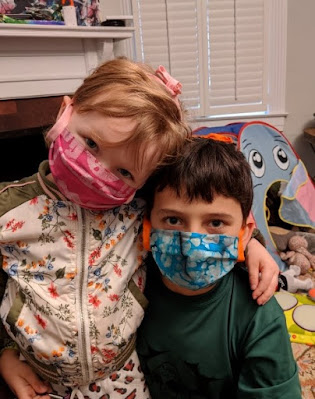Our friends at the New York Times haven't given us a Designer DIY for a while, but how nice to save it for Thanksgiving! And the fancy designer trick this time is -- wait for it -- mending!! And not just mending, but mending with sashiko stitching. Never mind that in June they got another famous designer to give us incomprehensible "advice" on how to mend jeans, now they're trying again, except this time we get a jacket for the pictures. And never mind that in July, in a different section of the paper, they got a guy to teach us how to mend jeans with sashiko.
I guess there's only so many good ideas that famous designers are able to come up with.
This week's advice comes from Sir Paul Smith, "known for his sharp suits and signature rainbow stripes," and who I suspect hasn't spent a lot of time actually mending anything. But he did share with us that "In this day and age of excess and more, more, more, I am often reminded of my dear mom who always used to darn socks or elbow tears." Seems that when Sir Paul would go to Japan in the 1980s he discovered quaintly mended old work garments, and brought samples home, and now wants to help us mend our duds with the same techniques.
 |
| Illustrations from New York Times Style section |
"Lay the garment flat on your working space," cut a patch "of material of your choice" with an inch and a half margin larger than the tear, and "pin the patch into place." No guidance on how to lay the garment flat if the tear is on the elbow, as suggested by a later illustration, or whether the patch goes on top of the tear or underneath. Not sure what the hands are doing in the corner of the illustration.
Anyway, you "start to stitch along the first seam of your patch." Where's that? More troubling, "make sure that the knot is on the inside of the patch for the first stitch and that it goes through both the garment and transplant patch." Say again? Surely they don't mean the knot goes through both the garment and the patch? Surely they mean the needle. But wait -- if the knot is in between the two layers, how can the needle go through both layers?
Not to worry, the illustration shows you what to do. Or does it? Is that a knot in the middle of the patch? Are we seeing the needle making three grabs and emerging under the left thumb? What are the left fingers doing? Looks like they're just underneath the patch and the stitching is going just through the patch. Where's the jacket? How do you hold onto the whole jacket while you're stitching the patch?
Not to worry, the next illustration will clear things up. Or does it?
Back to the stitching. "The sashiko stitch can be a simple running stitch and can run horizontal or vertically." (If you don't know what a running stitch is, maybe you can look it up online.)
"Leave a slight gap (say, a quarter inch) between the stitches to create a warp and a weft." Huh?? You might think a guy who has spent 50 years in the rag trade would know that warp and weft live in an entirely different ballpark from hand stitching.
Skip a half inch and put another row of stitching, repeat till the patch is totally sewed on. You can use a ruler if you want nice straight lines. There are lots of sashiko patterns, we're told, and you can find them online.
Now the beautiful watercolor of the finished project:
Hmmm. How do you suppose they got the patch on the sleeve? Especially since the first step is to lay the garment flat on the table? Instead of those gauzy drawings of hands doing something to something in space, maybe it would help if the drawings showed how to do the tricky parts. I wonder how many readers will stitch their elbow patch through both layers of the sleeve?



















